Introduction
Compared to other popular herbaceous ornamental plants, begonias are often perceived as easily propagated plants due to their ability to be regrown from leaf, stem, rhizome, or tuber cuttings as well as grow from seed (Figure 1). Begonia species and varieties are known for their imperfect, monoecious flowers (Figure 2 and 3). Having both male and female flowers on the same plant but not on the same flower allows the breeder to perform self-fertilization and cross-fertilization with ease.
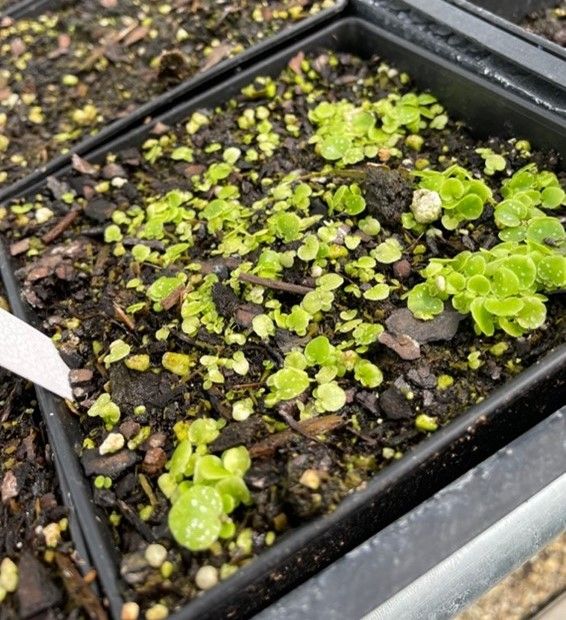
Credit: Julian Ginori, UF/IFAS
This EDIS publication is written for Florida nursery operators, landscape professionals, or individuals interested in propagating their own begonias. This guide will go into detail on how to multiply begonias via pollination/fertilization. If you would like to learn more about vegetative propagation of begonias, go to A Beginner’s Guide to Begonias: Vegetative Propagation. There are two methodologies for pollinating and fertilizing your own begonias: the flower removal model and the brush method. For more information on begonias in Florida, check out A Beginner’s Guide to Begonias: Classification and Diversity.

Credit: Julian Ginori, UF/IFAS

Credit: Julian Ginori, UF/IFAS
Seed Production via Hand Pollination
Begoniascan be propagated through seeds. Hundreds of seeds can be produced from a single pod, making it easy to produce sufficient seed materials for propagation. Seed production requires self-pollination; most begonias are self-compatible, which means pollen from male flowers on one plant can successfully pollinateand fertilize female flowerson the same plant. In order to ensure self-pollination occurs, manual crossings are generally required for pollination.
Pollination
Pollination can be defined as the transfer of pollen from the male organs (anthers) to the female organs (stigma) on the same or different flowers. This is the part of the reproductive process that requires human intervention to yield specific traits that are desired. In the case of Begonia, the male and female reproductive organs are on separate flowers, and thus the chances of self-pollination without human intervention are significantly reduced (Figure 2 and 3). Both male and female flowers can be found on the same plant, and it is possible for self-pollination to occur. Begonia species naturally try to avoid self-pollination through protandry—that is, the male flowers mature prior to the female flowers—or protogyny—the female flowers mature prior to the males. However, self-pollination is driven by pollinators when clonal plants are planted at different timing points to allow male flowers in one plant to bloom at the same time as the female flowers in another plant.
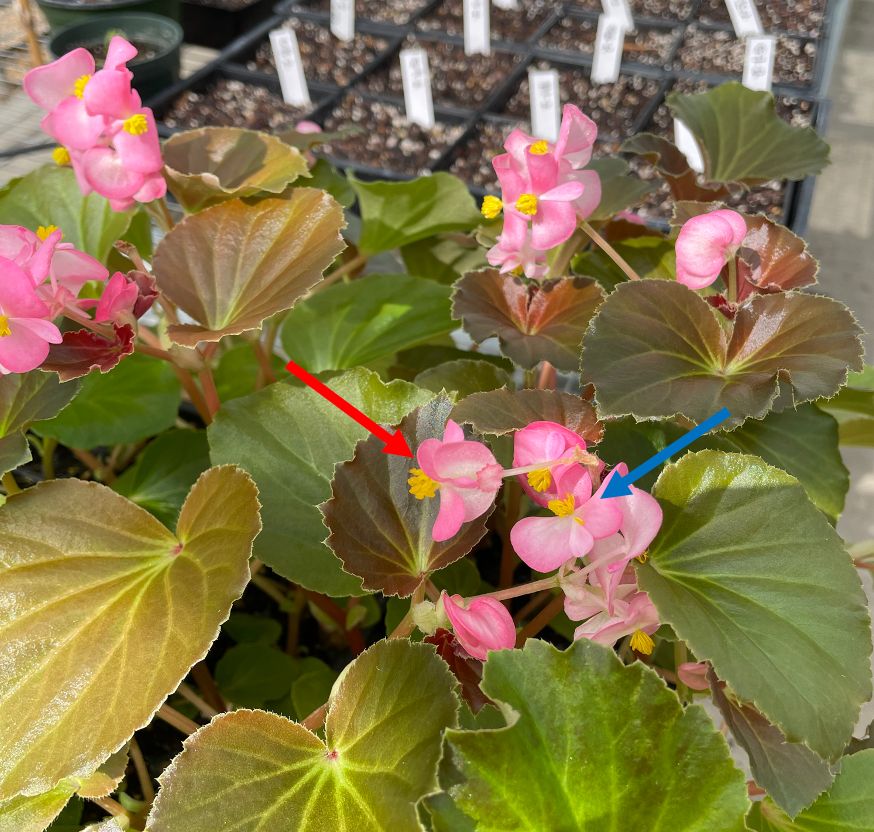
Credit: Julian Ginori, UF/IFAS
Fertilization
After female flowers are pollinated, fertilization occurs inside the ovary. Fertilization is defined as the union of the male gamete (sperm from pollen) and the female gamete (egg from ovule). Fertilization does not require human intervention because it occurs naturally in virtually every living organism on the planet. Pollination ends when the pollen grain lands on the stigma, and fertilization begins when the pollen tube forms to guide the sperm cell down the style to the ovary where the egg is. There are two methods to pollinate begonias, the flower removal method and the brush method. The following steps will detail how to successfully pollinate begonia flowers using both methods.
Flower Removal Method
- Locate a mature male and female flower. When it comes to male flowers, ensure the tepals are opened wide and the anthers are golden yellow. Gently shake the flower to see if some pollen grains fall on the tepals (Figure 5). If so, the flower is mature. The same goes for female flowers: look for a flower with a three-winged ovary with its tepals fully open. Refer to Figures 2 and 3 to see the difference between male and female flowers.
- Use a pair of forceps to carefully remove the male flower from the plant. Be careful not to disturb the pollen (Figure 5).
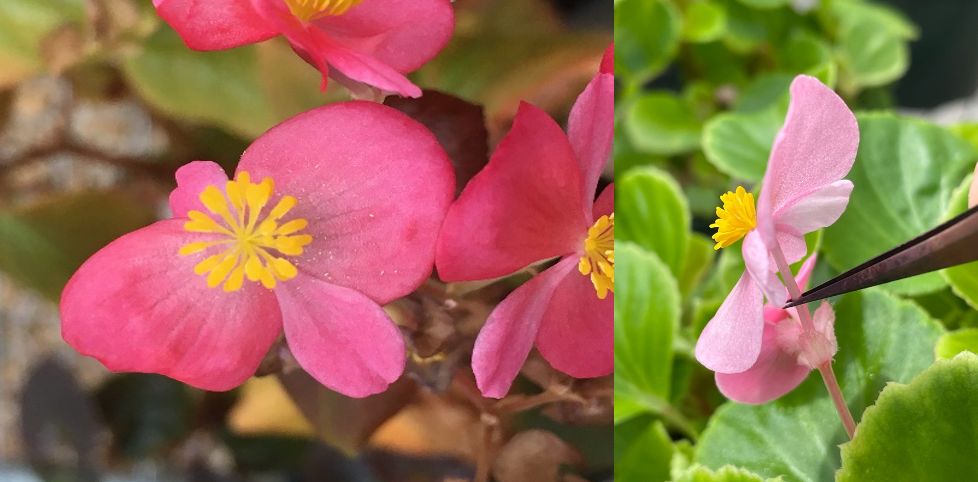
Credit: Julian Ginori, UF/IFAS
3. Lightly brush the collection of anthers onto the stigmas of the female flower. Be careful not to brush too hard, because you may damage the female reproductive organs (Figure 6).
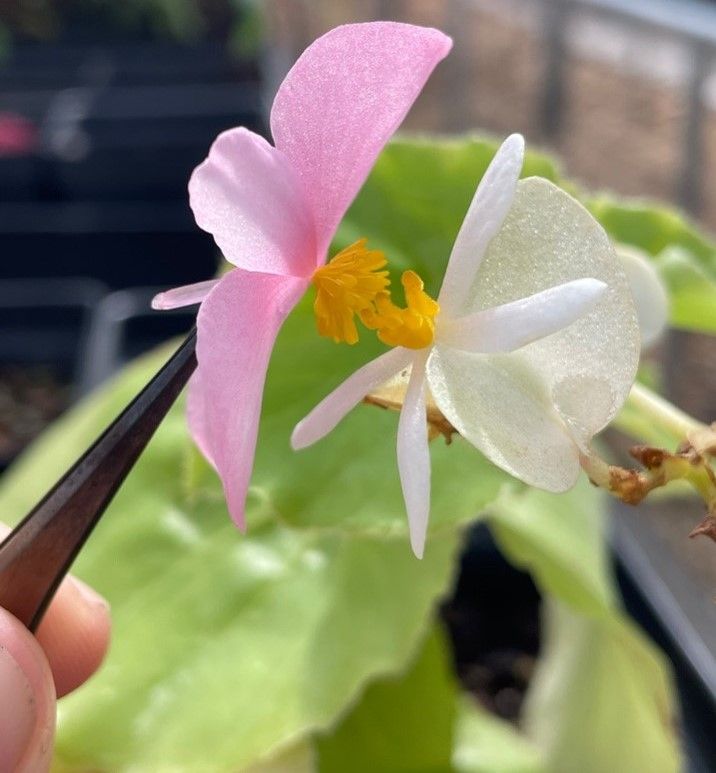
Credit: Julian Ginori, UF/IFAS
4. Label a tag with the male species, female species, and date of crossing to ensure proper records are kept. Fasten the tag around the female flower. Tepals of female flowers tend to break off from the plant once pollination and fertilization are complete, so be sure to attach the tag close to the female flower (see Figure 7).
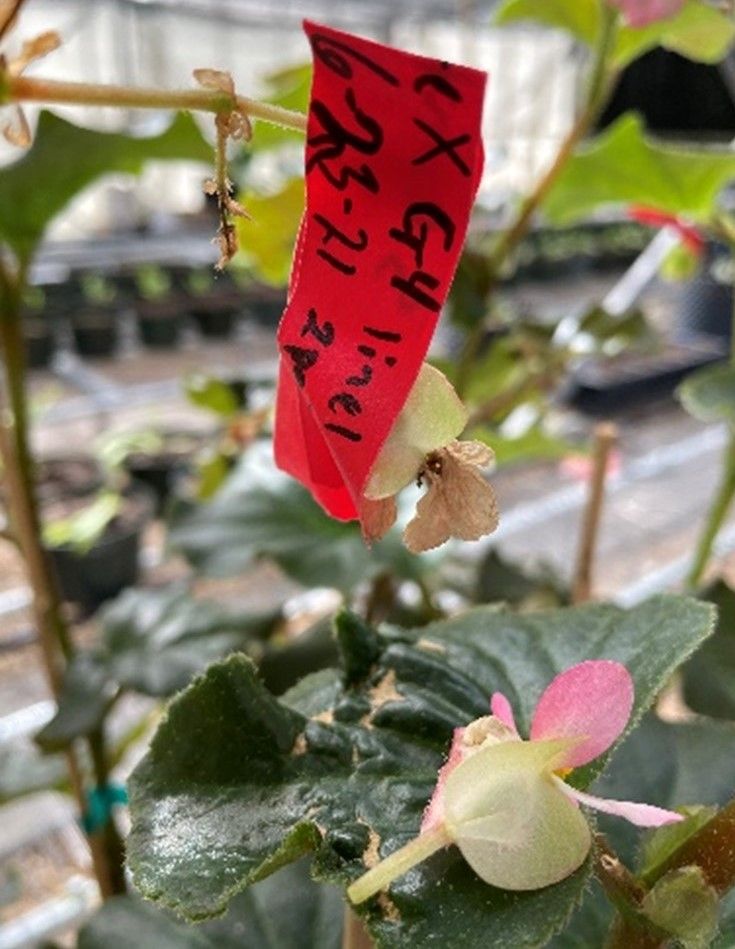
Credit: Julian Ginori, UF/IFAS
5. Observe the flower every few days to see if pollination was successful. If successful, you will first notice the tepals of the female flower begin to wilt and detach from the receptacle. A browning of the peduncle follows as the plant cuts off nutrients from the flower (Figure 9). Once the peduncle browns, the flower can be mechanically removed or allowed to fully brown and detach by itself.
Brush Method
- First, locate a mature male and female flower.
- Use a soft-bristled brush to gently brush the anthers of the male flower until you notice golden pollen grains on the end of the bristles. It may be easier to use a dark-bristled brush so it is easier to observe the pollen grains.
- Move to the female flower and lightly brush the stigmas with the end brush (Figure 8). Be sure to clean the brush in 70% rubbing alcohol before attempting another cross to avoid unexpected cross-pollination.
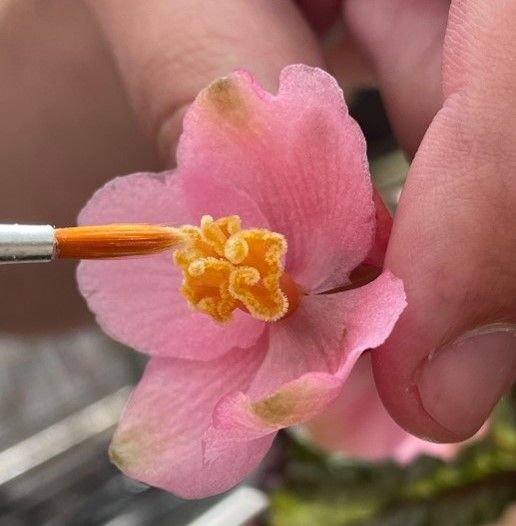
Credit: Julian Ginori, UF/IFAS
4. If done properly, you will notice the pollen resting on the stigmas of the female flower. Label a tag with the male species, female species, and date of crossing to ensure proper records are kept. Fasten tag around the female flower.
5. Observe the female flower every few days to see if pollination was successful. If successful, you will first notice the tepals of the female flower will begin to wilt and detach from the receptacle. A browning of the peduncle follows as the plant cuts off nutrients from the flower (Figure 9). Once the peduncle browns, the flower can be mechanically removed or allowed to fully brown and detach by itself.

Credit: Julian Ginori, UF/IFAS
Problems with Sexual Propagation through Seeds
Begonia is highly heterozygous, unlike some annual inbred ornamentals with perfect flowers. Most begonia plants have a mixed genetic background, and progenies from their seeds will not be true-to-type to the parental plants, even after self-pollination. Progeny seedlings will vary greatly and tend to differ from the parents. Another challenge for sexual propagation is that begonia seeds are tiny, ranging from 15–20 milligrams per 1000 seeds (Figure 10). In other words, there may be around 88,000 seeds per gram for wax begonia (Begonia Semperflorens-cultorum) and about 35,000 seeds per gram for tuber begonia (B.× tuber hybrid).In addition, begonia seeds cannot be stored wellunless proper measuresare taken (Haba 2015). Attention should alsobegiven to the seed quality for different varieties. Seeds for some varieties may remain dormant for extended periods, while other seeds may havelow viability due to developmental defects.
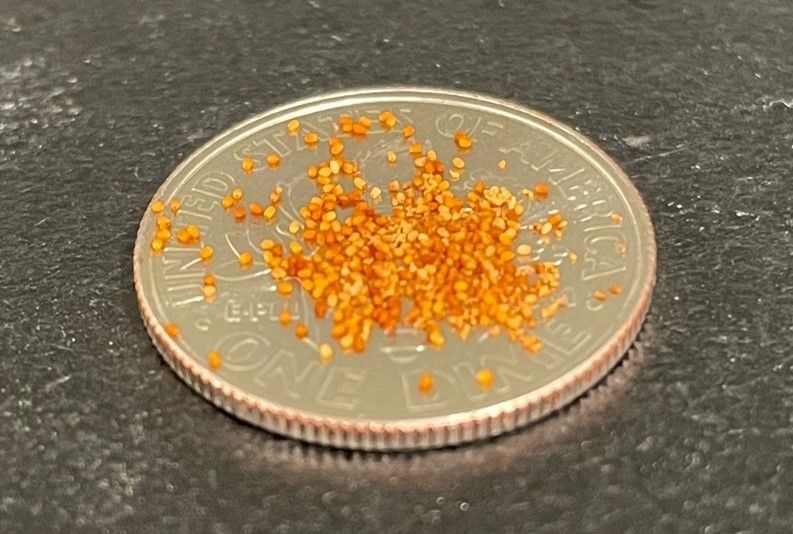
Credit: Julian Ginori, UF/IFAS
References
Ginori, J., A. Huo, Z. Deng, and S. Wilson. 2020. “A Beginner’s Guide to Begonias: Vegetative Propagation.” EDIS 2021. In prep.
Ginori, J., A. Huo, and C. R. Warwick. 2020. A Beginner’s Guide to Begonias: Classification and Diversity. EDIS 2020 (1). https://doi.org/10.32473/edis-ep581-2020
Haba, S. R. (2015). Conservation of Begonia Germplasm through Seeds: Characterization of Germination and Vigor in Different Species. Master’s Thesis, The Ohio State University.
Hartmann, H. T., F. T. Davies, R. L. Geneve, and S. B. Wilson. 2018. Hartmann & Kester’s Plant Propagation: Principles and Practices (Ninth Edition). Pearson.
Pounders, C. T., H. F. Sakhanokho, and L. M. Nyochembeng. 2015. “Begonia × semperflorens FB08-59 and FB08-163 Clonal Germplasm.” HortScience 50 (1): 145–146. https://doi.org/10.21273/HORTSCI.50.1.145